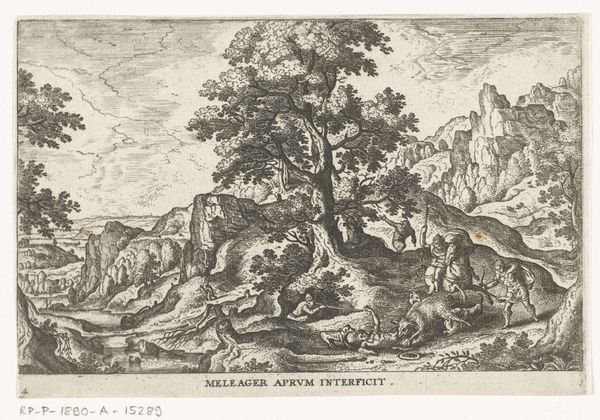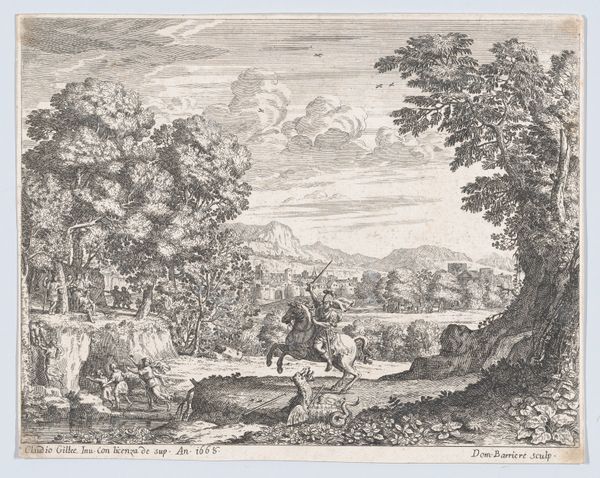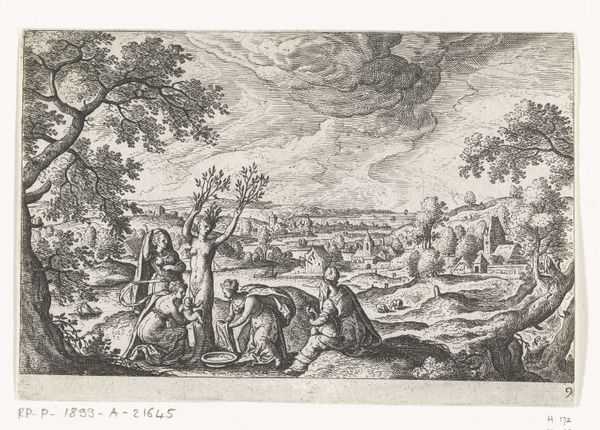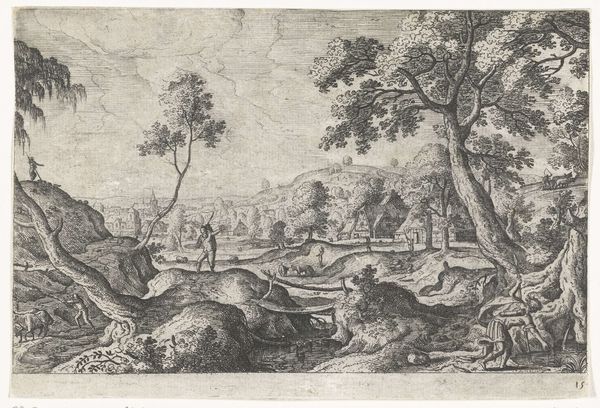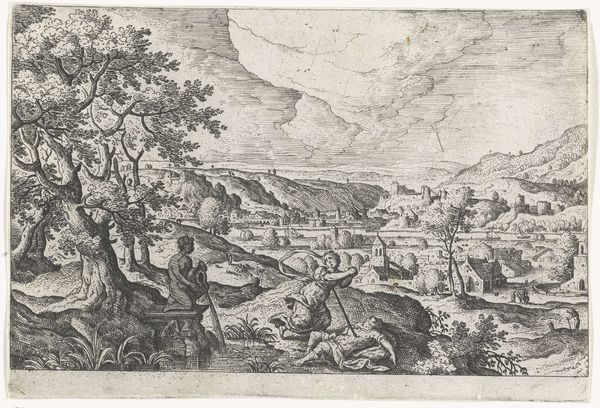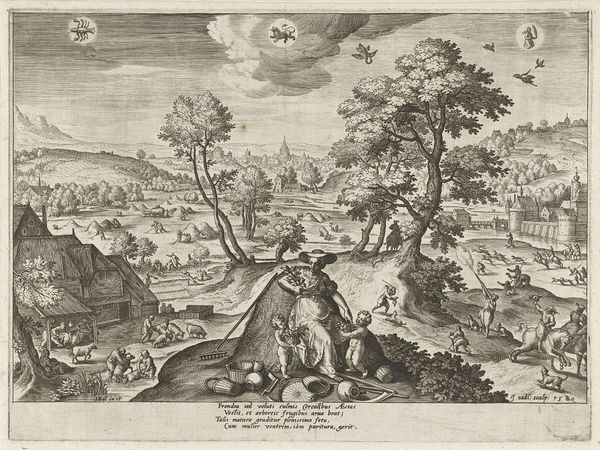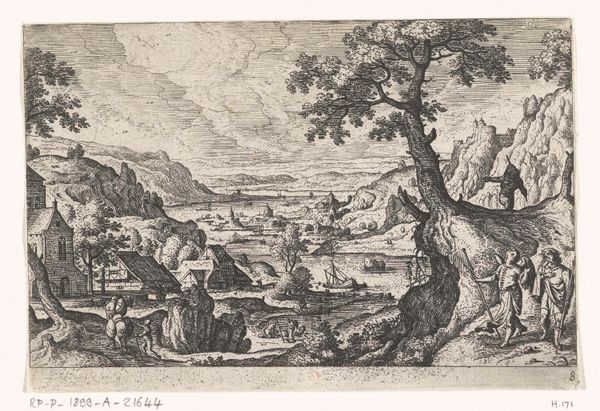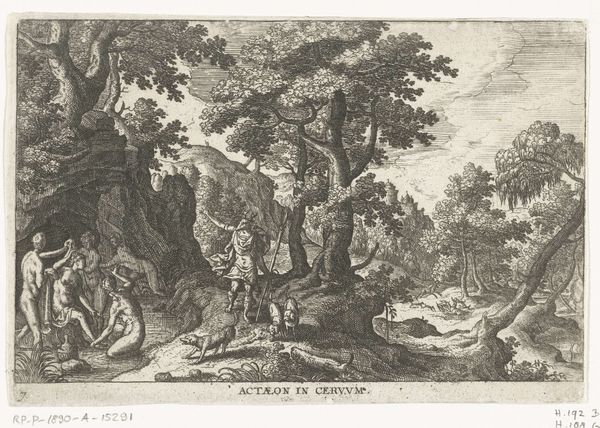
intaglio, engraving
#
baroque
#
pen drawing
#
intaglio
#
landscape
#
figuration
#
history-painting
#
academic-art
#
engraving
Dimensions: height 125 mm, width 185 mm
Copyright: Rijks Museum: Open Domain
Curator: Here we have "Venus and Adonis," an engraving likely created sometime between 1550 and 1650. It’s part of the Rijksmuseum collection. Editor: It feels melancholic, doesn’t it? Even in this small, intricately worked scene, the landscape evokes a sense of impending tragedy hanging over Venus and Adonis. Curator: Well, that’s the nature of the story, of course. Notice how the artist, despite remaining anonymous to us now, uses the intaglio process to create remarkable detail. The density of the lines in the foreground compared to the distant fields tells us a great deal about the relative weight and meaning of the landscape and the figures. Editor: Precisely! And consider the iconographic weight of the tree dominating the center. It's both a source of shelter and a symbolic marker. Trees so often represented knowledge, life, and death throughout the classical tradition. Given Adonis's impending doom related to his hunt and relationship with wild animals, there’s a looming connection to ideas about humanity's place in nature. Curator: The very materiality speaks volumes here. Intaglio engravings like this allowed for mass reproduction. So while the scene depicts mythological figures and idealized landscapes, the work itself speaks to a broader circulation of such narratives and ideals. Were these affordable, collectable works of art designed for a growing market or simply templates? How does mass reproduction democratize or degrade meaning? Editor: It also has this visual weight of other symbols and imagery that speaks to cultural memory and continuity through these archetypes. You can observe even, way off in the background, Diana is shown up in the clouds being pulled on a chariot by dogs! She's witnessing, aware! Curator: That background detail you note also prompts considering how social and political structures may have driven consumption and interpretations of scenes of leisure in this era. This isn't simply about beautiful figures in an Arcadian landscape; it is about the artist using labor to convey such information in great detail with a keen sense of what images sell well. Editor: Absolutely, the layering of visual symbolism reinforces a continuity of the message. It has lasting cultural impact and this really enriches this narrative of love, loss, nature and fate that just lasts across different generations. Curator: Precisely; viewing it through this production lens gives the picture a certain tension—between ideal representation and economic reality that just opens a vast space for interpretation. Thank you for noticing this piece along with me!
Comments
No comments
Be the first to comment and join the conversation on the ultimate creative platform.



